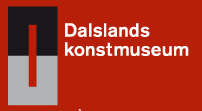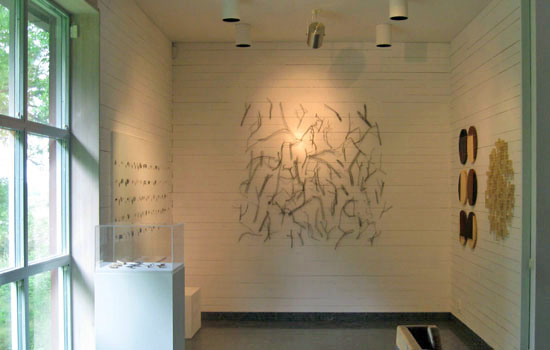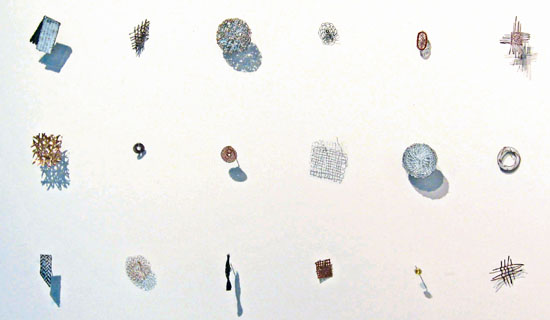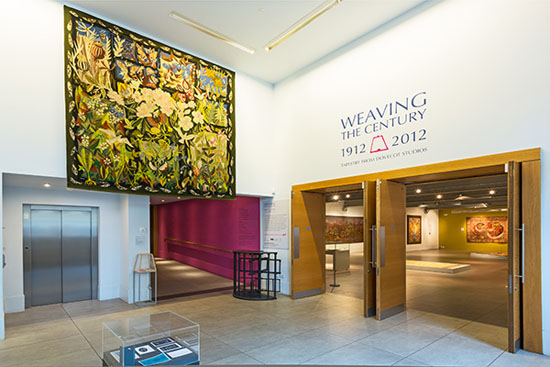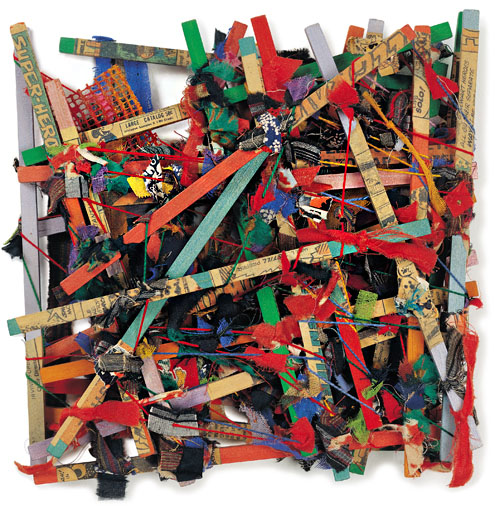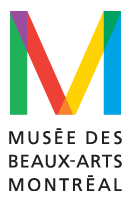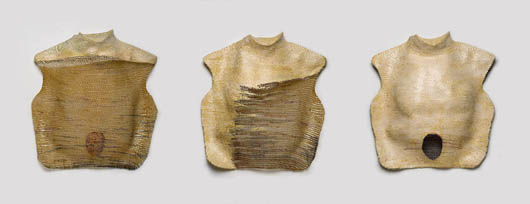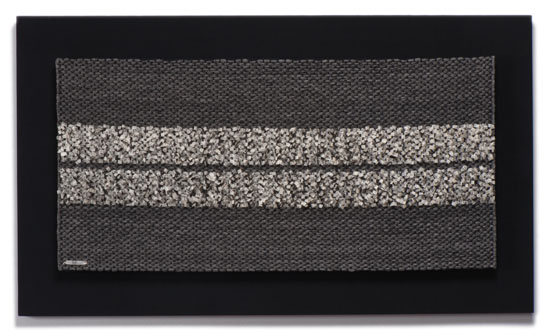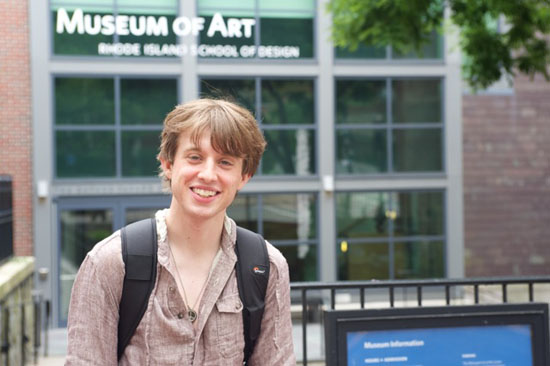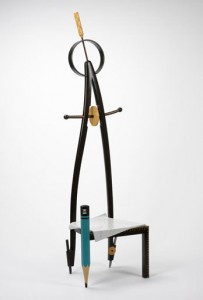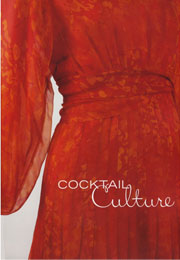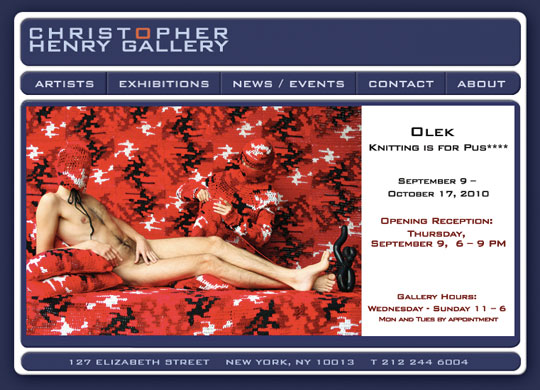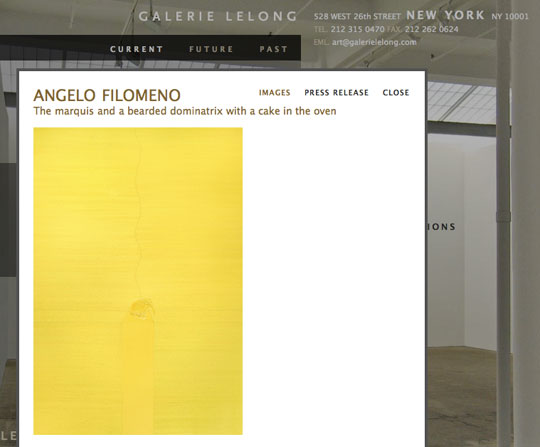If you plan to come to Wilton, Connecticut between October 26th and November 4th for browngrotta arts anniversary exhibition, Retro/Prospective: 25+ Years of Art Textiles and Sculpture, consider adding a stop at one of the other cultural venues in our area on your trip. There are several exhibitions to choose from — all within 30 minutes of browngrotta arts:
Flinn Gallery
Greenwich Library
9 x 9 x 3: New Visions
101 West Putnam Avenue
Greenwich, CT 06830
203.622.7947
through November 28, 2012

Katherine D. Crone, Blades of Grass, Wood, Usuyou Gampish, nylon monofilament Digitally altered photograph, inkjet printed, bookbinding stitched
9 x 9 x 3: New Visions is an exhibition of works created by members of the Textile Study Group of New York to fit inside wooden boxes with 9” x 9” x 3” exterior dimensions. Juror for the exhibition was Janet Koplos, who is a contributing editor of Art in America, where she was senior editor for 18 years. Among the artists included in the exhibition are: Katherine D. Crone, Margaret Cusack, Jeanne Heifetz, Nancy Koenigsberg, Carole P. Kunstadt, Yasuko Okumura, Gail Resen, Lois Russell, Barbara Schulman, Naomi Tarantal, Charlotte Thorp, K. Velis Turan, Saaraliisa Ylital and Erma Martin Yost. The Gallery hours are: Sunday 1:00 pm – 5:00 pm; Monday, Tuesday, Wednesday, Friday, Saturday 10:00 am – 5:00 pm and Thursday 10:00 am – 8:00 pm.
The Aldrich Contemporary Art Museum
Wendell Castle
Wandering Forms— Works from 1959–1979
258 Main Street
Ridgefield, CT 06877
203.438.4519
through February 20, 2013
Celebrated American designer/craftsman Wendell Castle (b. 1932) has been creating unique pieces of handmade sculpture and furniture for over five decades. Castle, who has consistently challenged the traditional boundaries of functional design since the outset of his career, was instrumental in helping to shape the American studio furniture movement throughout the 1960s and 1970s. He remains one of the most important American furniture makers working today.”To be inventive and playful and produce furniture which is a complement to nature, rather than in contrast to it is my philosophy,” Castle wrote in the catalog for the exhibition, Fantasy Furniture, held at the Museum of Contemporary Crafts, New York, New York in 1966.”My idea is not to reconstruct or stylize natural forms, but to produce a synthesis or metamorphosis of natural forms.” The Aldrich Museum hours are: Tuesday to Sunday, 12 noon to 5 pm.
The Aldrich Contemporary Art Museum
united states
Artist’s Projects
through February 24, 2013
united states is a semester of solo exhibitions and artist’s projects that approach both the nature of the United States as a country and “united states” as the notion of uniting separate forms, entities, or conditions of being. Timed to coincide with the 2012 American election season, united states is presented at a time when political and social divisions in this country are readily apparent, and polarization on many major issues is at an historical high. The Aldrich Museum hours are: Tuesday to Sunday, 12 noon to 5 pm.
The Wilton Historical Society
Building a Future From the Past: Architecture
224 Danbury Road
Wilton, CT 06897
203.762.7257
through October 31, 2012
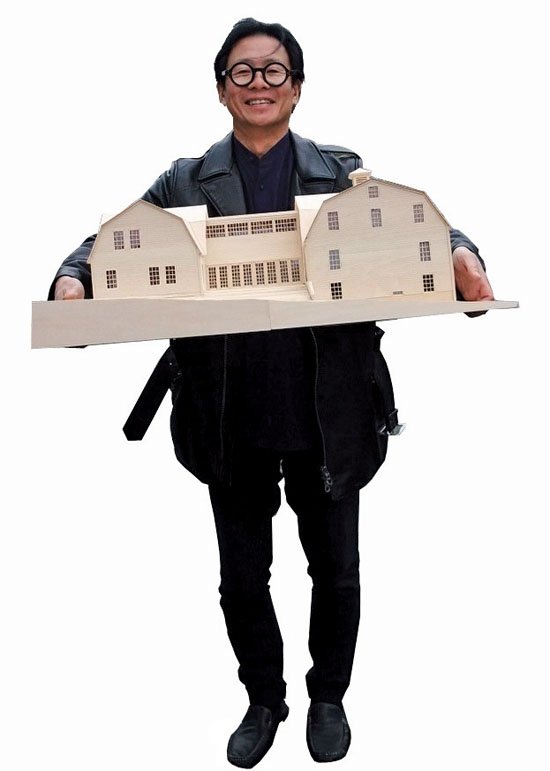
Architect David Ling holding, model of the browngrotta barn from the building a Future From the Past: Architecture exhibit ion. Photo by TomGrotta
This exhibition explores architects’ work to preserve antique homes while bringing them into the 21st Century. Among the homes included is browngrotta arts‘ home/office, designed by David Ling Architect, New York, New York. The Society’s hours are: Tuesday through Friday: 10 am to 4 pm; Saturday: 1 to 4 pm; 2nd & 4th Sundays of the month 1 to 4 pm.
browngrotta arts
Retro/Prospective: 25+ Years of Art Textiles and Sculpture
276 Ridgefield Road
Wilton, CT 06897
203.834.0623
October 26 through November 4, 2012
This exhibition features work by more than 70 artists, some are pioneers, some mid career and some new to the field of art textiles, while others work in wood and metal, porcelain, glass and clay. Artists’ reception and Opening: October 27th, 1 to 5 pm; http://browngrotta.com’ hours October 26th and October 28th- November 4th: 10 am to 5 pm.



